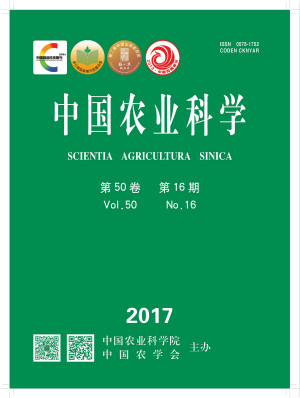-
Winter Wheat Grain Yield and Zn Concentration Affected by Long-Term N and P Application in Dryland
- HUI XiaoLi, WANG ZhaoHui, LUO LaiChao, MA QingXia, WANG Sen, DAI Jian, JIN JingJing
-
Scientia Agricultura Sinica. 2017, 50(16):
3175-3185.
doi:10.3864/j.issn.0578-1752.2017.16.012
-
 Abstract
(
393 )
Abstract
(
393 )
 HTML
(
12 )
HTML
(
12 )
 PDF (340KB)
(
497
)
PDF (340KB)
(
497
)
 Save
Save
-
References |
Related Articles |
Metrics
【Objective】 Wheat is one of the main cereal crops in northern China, and mainly grown in calcareous soils with low available zinc (Zn) , thus its grain Zn concentration generally is low. Nutrient biofortification of Zn in wheat grain has attracted great attention in recent years. Zn absorption and utilization of wheat are affected by the interaction between Zn and nitrogen (N) or phosphorus (P). Present study was based on a long-term fertilization experiment initiated in 2004 and on the potentially Zn-deficient and calcareous soil in dryland areas of northwestern China. Changes of yield and Zn concentration in grain of wheat affected by N and P application were investigated. 【Method】 The field experiment was carried out in a completely randomized block design with four treatments: control (CK, no fertilizer added), mono N application (N160, 160 kg N·hm-2), mono P application (P100, 100 kg P2O5·hm-2) and combined of N and P fertilization (N160P100, 160 kg N·hm-2, 100 kg P2O5·hm-2). Plant samples were collected to analyze the wheat biomass, grain yield and yield components, and Zn concentration, Zn uptake and distribution in wheat during four cropping seasons from 2012-2016.【Result】 Compared with the control, the N mono-application decreased the spike number of wheat by 9% and the grain yield and shoot biomass both by 12%, but increased the grain Zn concentration from 29.4 mg·kg-1 to 42.8 mg·kg-1 and by 46%, enhanced Zn uptake in grain and shoot, respectively, by 29% and 37%, and reduced the N /Zn and P/Zn ratios in shoot, respectively, by 13% and 45%. The P mono-application increased spike number, grain yield and shoot biomass, respectively, by 18%, 15% and 16%, but decreased grain Zn concentration and Zn uptake in grain and shoot, respectively, 31%, 19% and 17%, with the N/Zn and P/Zn ratios in shoot increased, respectively, by 19% and 83%. The N and P application also significantly increased the spike number, grain yield and shoot biomass, respectively, by 40%, 46% and 38%, enhanced Zn uptake in grain and shoot, respectively, by 36% and 34%, but decreased grain Zn concentration by 8%, with the N /Zn and P/Zn ratios in shoot increased, respectively, by 43% and 27%. Compared with the mono P, the N and P application not only increased grain yield, but also elevated the grain Zn concentration, as the result of the enhanced wheat Zn uptake and the weakened P inhibition on Zn uptake. 【Conclusion】 Although N application could increase the grain Zn concentration of winter wheat to achieve crop nutrient biofortification, the long term of mono N application is not a conducive way to sustain and increase the wheat grain production due to the nutrient imbalance in soil. The mono P application could increase the wheat grain yield, but suppress the Zn uptake, then depress the grain Zn accumulation and decrease the grain Zn concentration. Therefore, it is suggested that the N and P fertilizers should be applied together to ensure the wheat production with high yield and high quality in dryland of the Loess Plateau.









